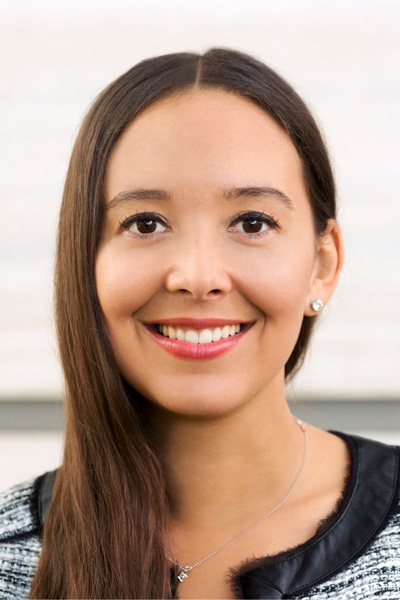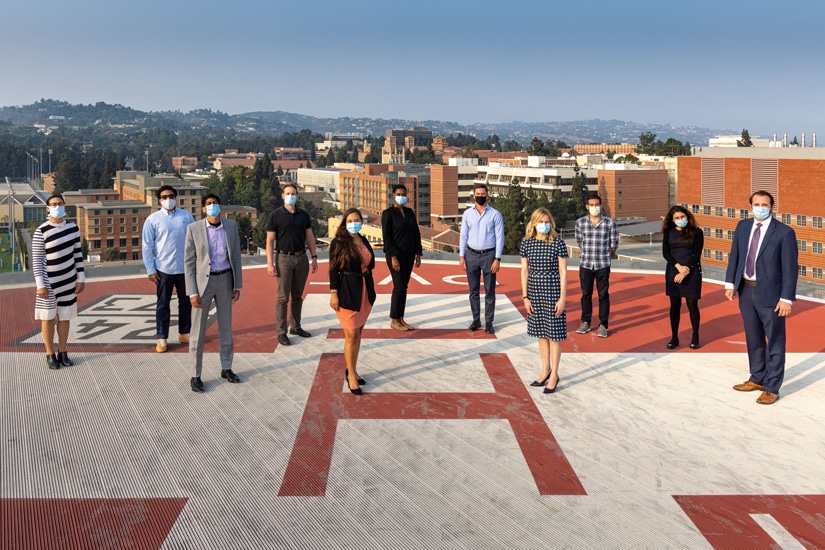|
Getting your Trinity Audio player ready...
|
Advancements in technology and dramatic improvements in patient outcomes go hand in hand. Each year, healthcare innovators introduce techniques that once seemed impossible. Doctors use 3D virtual reality models to prepare for surgery, experimental brain implants bring visual perception to the blind, and artificial intelligence helps pathologists diagnose breast and prostate cancer faster than ever before.
It’s all happening at UCLA Health, California’s top hospital and one of the best in the nation. Desert Horse-Grant is the organization’s chief of innovation. She works behind the scenes to identify, develop, and introduce healthcare’s next breakthrough. “When medicine, business, and engineering come together, something truly special can happen,” she says. “That’s the kind of innovation we’re looking to facilitate.”
Horse-Grant has a track record of working with scientists and inventors to coordinate clinical trials and bring new products to market. She spent the first thirteen years of her career at the nation’s leading cancer and research centers, including New York’s Memorial Sloan-Kettering Cancer Center, where she was instrumental in developing a pioneering cross-disciplinary brain tumor center. Horse-Grant joined UCLA in 2017 to create the pathways that bring discoveries out of the laboratory and into the clinical setting.

Desert Horse-Grant, Chief of Innovation, UCLA Health
In 2019, Horse-Grant joined forces with UCLA faculty member Jennifer McCaney, a Fulbright Scholar with a PhD in mechanical engineering and an MS in biomedical engineering. Together, the partners in innovation created UCLA Biodesign, a unique program that unites the medical community with industry stakeholders to develop and implement novel technologies while simultaneously training the next generation of healthcare innovators.
UCLA Biodesign operates a year-long fellowship that places engineering, medicine, design, and computer science professionals at the front lines of healthcare innovation and gives them access to UCLA’s vast clinical and health IT resources. The “discovery fellows” form interdisciplinary teams that embed in the UCLA Health System.
“We give them a pair of scrubs and a notebook and invite them into our environment to observe. They’re using their impressive backgrounds and top training to generate hundreds of ideas of improvements,” Horse-Grant explains. Then, the program’s leaders apply design thinking principles to greenlight ideas for the engineering phase.
In 2020, UCLA Biodesign’s discovery fellows were working in neurointerventional radiology, hoping to develop new solutions for doctors treating stroke and brain tumor patients. But when the coronavirus pandemic hit, they chose to pursue rapid innovations to stop the spread of COVID-19.
By March of 2020, industry experts warned of a possible shortage of lifesaving ventilators used to treat COVID patients. The medical devices—which can cost up to $50,000 each—were getting scarce. UCLA Biodesign Discovery fellow and engineering graduate student Glen Meyerowitz asked UCLA Health clinicians to teach him about treatment protocols and device functionality. In less than one week, Meyerowitz created a working low-cost ventilator prototype using only parts from a local hardware store. The device is set to go through testing and an Institutional Review Board (IRB) study as required by FDA regulations, but could be mass produced for $1,000 per unit.
“When medicine, business, and engineering come together, something truly special can happen.”
Ventilators weren’t the only device in short supply at the start of the pandemic. Like most health systems, UCLA Health needed more nasopharyngeal swabs for COVID-19 testing. UCLA Biodesign fellow Gabriel Oland, MD, tabled his original project (a noninvasive intracranial pressure monitoring device) and instead worked with Horse-Grant and the manufacturers to design and produce 3D-printed, medical-grade swabs. Before the end of April 2020, UCLA Health completed clinical testing according to FDA guidelines and received institutional IRB approval to use the 3D-printed swabs.
As current UCLA Biodesign fellows set out to bring innovation to the Pulmonary and Critical Care Division at UCLA, Horse-Grant is creating additional programs and looking for other opportunities to drive innovation forward. The UCLA Health Innovation Challenge launched by Horse-Grant provides awards of up to $50,000 to faculty, staff, volunteers, patients, students, and others who create ideas that scale health equity, design solutions that solve clinical needs, or address problems related to financial sustainability and wellness.
The area of health equity is of particular importance to Horse-Grant. “Innovation is part research and part technology development, but it’s also about doing things that matter to your community. We can be innovative in our approach by making sure everyone has fair and equal access to healthcare,” she says. Horse-Grant served as cochair of a national search committee that hired UCLA Health’s first chief of health equity, diversity, and inclusion. The executive position is among the first of its kind and will help UCLA Health increase access to underserved populations and diverse communities.

Over the past decade, Los Angeles has benefited from the rise of Silicon Beach. Horse-Grant has advocated for UCLA Health to have an innovation strategy at the convergence of medicine and tech. Google made headlines when it opened a nearby hub in Venice, California, in 2011. Since then, other leading tech companies have followed. The area is now home to a thriving tech scene anchored by major players like Hulu, YouTube, Facebook, Apple, Snapchat, and hundreds of savvy start-ups.
“The tech leaders, investors, and healthcare innovators are all in Southern California, and we can work together to bring important developments to the world,” Horse-Grant says. She and McCaney received a federal grant of $1.5 million to build a regional hub to partner with these local tech companies for the development of medical technology and digital health tools.
When asked what all of these efforts will produce, Horse-Grant points to technologies that have spun out of UCLA. She recently was given space to be redesigned for the first Health Innovation Laboratory (iLab), where UCLA Biodesign trainees and other healthcare transformers can invent and reimagine care with innovative methods, design principles, and medtech knowledge.
“This is a place where architects, designers, engineers, and medical healthcare professionals can engage with technology to help create better designs for increased healing and more individualized care,” she says. “It’s where trainees could invent wireless devices to monitor patient vital signs without invading their privacy, and where machine learning algorithms could help providers develop treatment plans and predict crises.”
In 1956, UCLA doctors performed the first open-heart surgery in the Western United States. Since then, the organization’s renowned researchers and healthcare providers have developed techniques for fetal monitoring, set the international standard for tissue typing, helped create CT and PET scan technology, performed the nation’s first shoulder replacement, pioneered stem cell harvesting methods, developed vaccines, created new products, and won both the National Medal of Science and the Nobel Prize.
Now, Horse-Grant’s initiatives have provided the next leg of UCLA Health’s journey. And with UCLA Biodesign, that legacy of innovation can move into the future.

